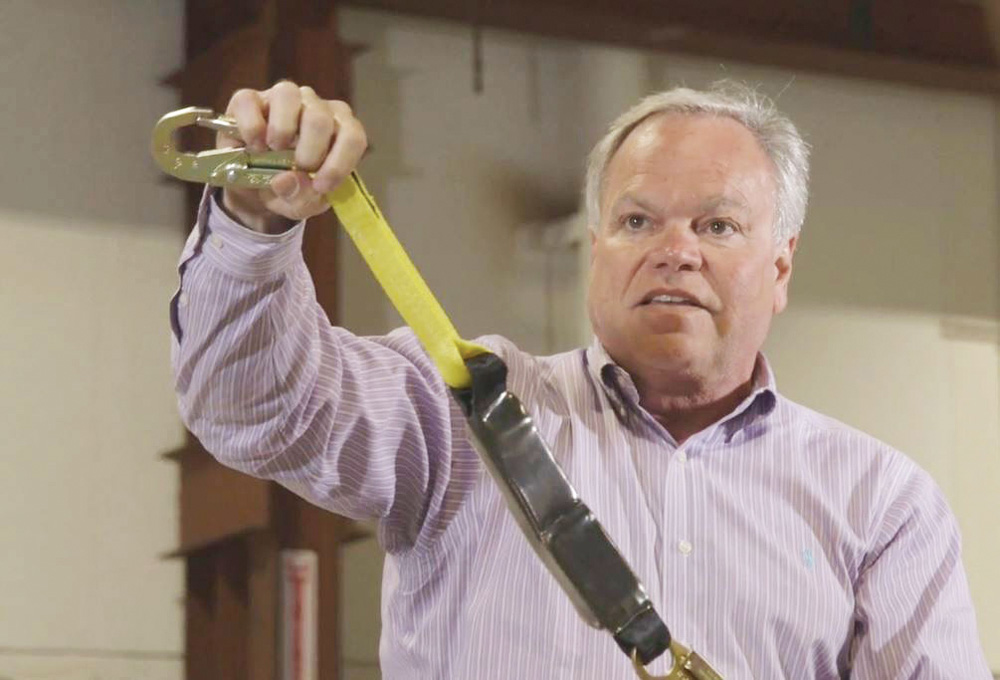Your roofing contractor’s safety practices are your business.
By Walter C. Fluharty, PSY.D, SPHR, CEES
A commitment to rooftop safety is a way of life in commercial roofing. With falls being the Number 1 cause of fatalities in the construction industry, roofing contractors have learned the importance of maintaining a company-wide commitment to observing the most stringent safety practices while on the roof. And they’re not the only ones.
Building owners and facility managers have also learned that taking an active role in assuring a contractor’s safety can prove to not only decrease a construction project’s expense and duration, but also improve job quality.
When evaluating roofing contractors, review their safety documentation and past performance to ensure they put a premium on protecting their employees from any potential hazards while on a roof. This, in turn, will help assure minimized risk to your employees, tenants and property.
Roofers who just claim a commitment to safety in a brochure isn’t enough. They should be able to back it up with documented jobsite guidelines and show that they literally wear their commitment to safety on their sleeve… and on their head… their hands … their feet, etc. In other words, they always suit up in proper personal protective equipment (PPE).
Safety from Head to Toe…and Beyond
Just like selecting the proper tools for the job, selecting all of the correct PPE plays a critical role in completing the project the right way so everyone on the crew can return home safely at the end of the day.
 Contractors who develop a PPE program and follow it with reinforcement, discipline and consistency are a credit to the roofing industry. These programs should address what types of PPE shall be worn and how employees will be trained to use it. Further, it should account for how PPE will be cleaned, maintained and properly discarded.
Contractors who develop a PPE program and follow it with reinforcement, discipline and consistency are a credit to the roofing industry. These programs should address what types of PPE shall be worn and how employees will be trained to use it. Further, it should account for how PPE will be cleaned, maintained and properly discarded.
Below are the fundamentals of PPE any contractor you hire should be using when working on your commercial roof.
- Head protection: A hard hat must be worn by anybody accessing the roof or going up and down a ladder on the jobsite. The hard hat must stay on if there are any overhead hazards while working on the roof. When working underneath pipes and HVAC systems, workers should be wearing bump caps to protect against lacerations, abrasions and minor bumps to the head.
- Eye protection: To protect the eyes from dust and splashing substances, an approved set of ANSI (American National Standards Institute) safety glasses should be worn. These must meet the requirements for both splash protection and impact protection. If cutting, grinding or tearing off roof materials is part of a project, a face shield and goggles must be used to provide the maximum degree of eye and face protection.
- Hand protection: Cuts and abrasions on workers’ hands are among the more common roofer injuries. Workers should always be wearing the appropriate cut-resistant gloves when they are handling sharp or abrasive material. Also, if they’re handling any type of chemicals, gloves need to provide the appropriate chemical resistance.
- Foot protection: ANSI approved safety boots, which go above the ankle and are either approved safety steel-toe or composite toe, need to be worn to provide protection from injury and offer comfortable support.
- Hearing protection: When working in a noisy environment or with loud tools, earmuffs or ear plugs should be worn to guard against hearing damage. According to OSHA, hearing protection is part of a hearing conservation program, which is required when noise exceeds the action level [85 decibels on the A scale (dBA)].
- Skin protection: To protect against sunburn and dangerous UV rays, sunscreens and lip balm should be applied. In certain situations, pitch cream should be worn to provide a barrier when working with old roofing materials that contain pitch, which is known to irritate skin.
- Temperature protection: It’s also essential to be prepared for outdoor temperatures. On hot days, plenty of ice-cold water should be available for essential hydration. During those bone-chilling days, the correct thermal clothing and gear should be worn to stay warm and be protected from the cold and wind.
As a building owner or facility manager, you want to make sure safety — from the appropriate PPE detailed, documented protocols — is a critical item on the checklist for all of your construction projects before they begin.
— Walter C. Fluharty, a 30-year veteran of the safety industry, is the vice president of Environmental Health and Safety & Organizational Development for Simon Roofing, one of the largest and longest-operating national commercial roofing manufacturers/contractors in the United States.
